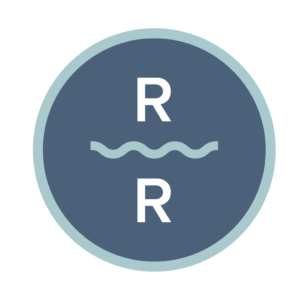Anxiety & Substance Use Disorder


- Last Modified: July 27, 2023
According to a journal published by the National Library of Medicine (NLM) anxiety and substance use disorders rank among the most prevalent psychiatric issues in the United States. The lifetime rates reach nearly 30% and notably, research suggests that people with anxiety disorders are more likely to develop substance use disorders, and vice versa.
Understanding this intricate relationship between anxiety disorders, symptoms of anxiety, and substance use disorders (SUDs) is essential for medical professionals and individuals struggling with symptoms alike. Extensive research has revealed that the co-occurrence of anxiety disorders, anxiety symptoms, and SUDs is extremely common. This interaction is complex and variable, with anxiety symptoms emerging during chronic intoxication and withdrawal, and anxiety disorders serving as a risk factor for the development of SUDs.
What Is Anxiety?
Anxiety is a normal human emotion that everyone experiences at various times. However, for some individuals, anxiety becomes chronic and overwhelming, significantly impacting their daily lives. It can manifest as excessive worry, restlessness, irritability, and physical symptoms such as rapid heartbeat and shortness of breath. Anxiety disorders, including generalized anxiety disorder (GAD), panic disorder, social anxiety disorder, and others, are diagnosed when these symptoms persist and interfere with daily functioning.
Additionally, unlike regulated emotional experiences many have, clinical anxiety is characterized by persistent and often unfounded fears that can get in the way of everyday life or performing responsibilities.
Types of Anxiety Disorders
Anxiety disorders include a range of conditions, each with its own unique characteristics. Having the tools necessary for properly identifying and treating these different types of anxiety disorders is essential for treatment.
Some common anxiety disorders include:
- Generalized Anxiety Disorder (GAD): Persistent, excessive worry and tension
- Panic Disorder: Recurrent panic attacks accompanied by intense fear.
- Social Anxiety Disorder: Fear of social situations and excessive self-consciousness
- Specific Phobias: Intense fear and avoidance of specific objects or situations.
- Obsessive-Compulsive Disorder (OCD): Intrusive thoughts and repetitive behaviors.
- Post-Traumatic Stress Disorder (PTSD): Resulting from a traumatic experience.
How Substance Use Disorder Affects Anxiety Disorders
Substance use disorder(s) not only heightens existing anxiety or anxiety disorders but can also lead to the development of new anxiety symptoms. While drugs and alcohol may create the illusion of temporary relief from these anxiety symptoms, these substances ultimately worsen the condition, leading to a vicious cycle of substance abuse and heightened anxiety. This complicated relationship is essential to understand especially when providing effective dual diagnosis treatment.
According to an article published by PubMed Central (PMC) on NLM states that research shows anxiety disorders predate substance use disorders in at least 75% of cases–demonstrating the prevalence of self-medication through substance abuse, particularly alcohol abuse, in their cases.
Conversely, the presence of a substance use disorder can also impact the course of anxiety disorders. A 12-year study found that the presence of a substance use disorder actually decreased the recovery rate and increased the likelihood of recurrence of Generalized Anxiety Disorder (GAD). Studies have shown this to be especially true for those who struggle with alcohol use disorders.
Begin Recovery
Signs and Symptoms of Anxiety Disorder
Anxiety can present itself in many different forms which is why recognizing the signs and symptoms can be key to seeking timely help.
Common symptoms include:
- Excessive worrying or intrusive fears
- Feelings of apprehension and restlessness
- Irritability
- Difficulty Concentrating
- Disturbances to sleep
- Physical manifestations like muscle tension and fatigue.
If you, a loved one, or someone you know is experiencing these symptoms alongside substance abuse, it may indicate the presence of a co-occurring disorder or dual diagnosis requiring professional intervention.
Potential Causes for Anxiety Disorders
Anxiety disorders can stem from a variety of factors, both biological and environmental. While the precise causes of anxiety disorders are not yet fully understood, research suggests several potential contributors. One significant factor is genetics as individuals with a family history of anxiety disorders are more likely to develop one themselves.
Additionally, imbalances in brain chemistry and neurotransmitters, such as serotonin and gamma-aminobutyric acid (GABA), play a role in the development of anxiety disorders. Traumatic experiences, such as childhood abuse or witnessing a traumatic event, can also contribute to the onset of anxiety disorders.
Other factors like chronic stress, certain medical conditions, and substance abuse can exacerbate or trigger anxiety symptoms. By exploring these potential causes, healthcare and medical professionals can better understand the underlying mechanisms and develop effective strategies for the treatment and management of disorders.
Treatment for Co-Occurring Disorders (Dual Diagnosis)
When an anxiety disorder and substance use disorder co-occur or occur concurrently (dual diagnosis), approaches to treatment as well as treatment options can vary depending on the healthcare professional’s diagnosis. Both disorders could be treated simultaneously in either an integrated treatment or in parallel. Another option is to treat one disorder initially and the other disorder after.
Different approaches to treatment are often evidence-based and should be tailored to the unique needs of the individual. The most common approach however is cognitive-behavioral therapy (CBT) which has been shown to be effective in addiction treatment and treating anxiety or mental health disorders. CBT-based treatments help those struggling to learn how to recognize and modify harmful thoughts and behaviors they have relating to their substance use. It achieves this by focusing on identifying, understanding, and changing behavior patterns.
When it comes to addressing co-occurring disorders, a comprehensive treatment approach is crucial for achieving lasting recovery. Specialized treatment programs offered at reputable addiction centers cater to the unique needs of individuals facing both mental health and substance use challenges. These programs encompass a range of therapeutic interventions designed to address the complexities of dual diagnosis.
Common Co-Occurring Treatment Options
One key aspect of treatment is the availability of both outpatient and inpatient options. Outpatient programs provide flexibility, allowing individuals to receive treatment while still living at home and maintaining their daily routines. These programs typically involve individual counseling, group therapy, medication management, and educational sessions to address both the addiction and the underlying mental health issues.
In contrast, inpatient treatment programs offer a more intensive level of care and are particularly beneficial for individuals with severe co-occurring disorders or those who require a structured and supportive environment. Inpatient programs often include individual and group therapy, medical supervision, holistic therapies, and 24/7 support to facilitate the recovery process.
Detoxification, or detox, is an essential component of treatment for many individuals with co-occurring disorders. Medically supervised detoxification helps manage the withdrawal symptoms associated with substance dependence in a safe and supportive setting. It allows individuals to cleanse their bodies from substances while receiving necessary medical care, psychological support, and monitoring.
Whether individuals opt for outpatient or inpatient treatment, the focus remains on integrated care. This approach involves addressing both the mental health and substance use aspects concurrently, ensuring that individuals receive comprehensive support to achieve recovery from both disorders. Treatment programs emphasize evidence-based therapies, such as cognitive-behavioral therapy (CBT), dialectical behavior therapy (DBT), and motivational interviewing, tailored to the specific needs and goals of each individual.
Get Help for Anxiety and Substance Use Disorder
It’s important to note that effective treatment for dual diagnosis and co-occurring disorders is a journey that requires ongoing support and relapse prevention strategies. Following completion of a treatment program, individuals are often encouraged to engage in aftercare services, such as outpatient programs, support groups, and ongoing psychiatric care, to sustain their recovery and maintain their overall well-being.
If you or a loved one is struggling with anxiety and substance use disorder, take the first step toward recovery today. Treatment options can be complicated to navigate and our team at Riverside Recovery of Tampa understands firsthand that each experience is unique.
Contact our admissions team today if you have any questions or want to learn more about co-occurring disorder treatment options.
- Substance Abuse and Mental Health Services Administration – (SAMHSA) https://www.samhsa.gov/co-occurring
- National Institute on Drug Abuse (NIDA)– https://www.drugabuse.gov/publications/topics-in-brief/comorbidity-substance-use-disorders-other-mental-illnesses
- National Alliance on Mental Illness (NAMI)– https://www.nami.org/About-Mental-Illness/Common-with-Mental-Illness/Co-occurring-Disorders
- Anxiety & Depression Association of America– Substance Use